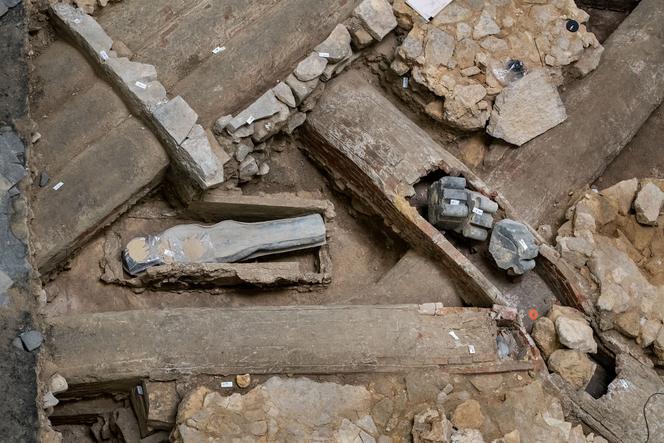


The French National Institute of Preventive Archaeological Research (Inrap) had warned that this Tuesday, September 17, the progress report on the research undertaken after the fire that ravaged Notre-Dame Cathedral in Paris on April 15, 2019, would reveal "some heavy stuff." It was a promise kept, starting with the identity of the occupant of one of the two leaded coffins found under the transept crossing in April 2022. It is believed to be the poet Joachim Du Bellay, who died at the age of about 35, on the night of January 1 to 2, 1560.
Eric Crubézy, medical doctor and Professor of Anthropology at Toulouse's Paul-Sabatier University, made the announcement at the end of a presentation that was already particularly rich since it reviewed no fewer than 14 excavations carried out in and around the religious building.
Crubézy and his team arrived at the name of Joachim Du Bellay following a truly retrospective investigation. In early 2022, the transept crossing had been excavated prior to the installation of the famous 700-ton scaffolding that would enable the spire to be rebuilt. Eight graves were discovered. This was not surprising: Thousands of people, mainly churchmen, were buried in what was then a necropolis between the 14th and 18th centuries.
But among them were two leaded coffins, proof that their occupants had a special status. The name of the first was immediately known, as attested by a plaque with an epitaph under the tombstone, and a second, smaller one affixed to the coffin: Antoine de la Porte, who died in 1710, was a canon of Notre-Dame for 50 years and a wealthy patron of the arts who financed the enclosure of the cathedral choir.
The second was more mysterious: We knew that he had died young, that he suffered from tuberculosis of the bones and that his last years had probably been very difficult. The deformity of his skeleton attested to his intense and long-standing riding habits – researchers had nicknamed him "The Horseman." The archaeologists had also established that the coffin had been moved, at an unknown date, to reoccupy a previously used site, as was often the case.

The Pléiade poet has joined up the dots. The writer was not a religious dignitary but he had been a canon of Notre-Dame de Paris. Above all, he was the nephew of Jean Du Bellay, former bishop of Paris, cardinal and dean of the Sacred College in Rome – in other words, number two in the Church. On January 2, 1560, he was buried at Notre-Dame in the chapel of Saint-Crépin. This, at least, is what the record of the consent of the chapter, the college appointed by the pope to determine the location of burials, indicated.
You have 61.78% of this article left to read. The rest is for subscribers only.
